Are you overwhelmed by the idea of spending four or more years in traditional college? If so, trade schools might be the perfect solution for you. These vocational institutions offer a fast track to success, providing hands-on training and practical skills in a fraction of the time and cost. Discover how trade schools can pave the way for a rewarding career and transform your future.
1. Cost-Effective Education Options
Trade schools, or vocational schools, present a cost-effective alternative to traditional four-year universities. With an average total cost of around $33,000 for a complete program, students can save significantly compared to the annual expenses of over $20,000 at a university. Many trade schools also offer flexible schedules, allowing students to work part-time while pursuing their education.
These institutions focus on in-demand skills, often completing programs in two years or less, with some certificates available in under a year. Smaller class sizes ensure personalized attention from experienced instructors, many of whom are industry professionals. Additionally, trade schools provide various financial aid options and boast higher graduation rates, often leading to salaries comparable to those of four-year college graduates.
2. Shorter Program Durations
Trade schools, or vocational schools, are designed to provide students with a more efficient path to their careers. With programs often lasting two years or less, students can quickly gain the skills needed to enter the workforce. This shorter duration appeals to those eager to start their professional journey without the lengthy commitment of traditional four-year colleges.
Many trade schools offer certificate programs that can be completed in under a year, allowing students to acquire specialized skills rapidly. This accelerated learning model is particularly beneficial for individuals looking to pivot careers or enhance their qualifications in a competitive job market. The ability to gain credentials quickly can lead to faster employment opportunities.
Additionally, trade schools provide multiple start dates throughout the year, offering flexibility that traditional institutions may lack. This allows students to begin their education when it suits them best, accommodating various personal and professional schedules. The focused nature of these programs means students can dive straight into their chosen field without the distraction of unrelated general education courses.
Graduation rates at trade schools tend to be higher than those at traditional colleges, reflecting the effectiveness of their targeted training. Many vocational schools also offer job placement assistance, helping graduates transition smoothly into the workforce. This combination of shorter program durations and dedicated support services makes trade schools an attractive option for many aspiring professionals.
3. Hands-On Training Experience
Hands-on training is a cornerstone of trade school education, equipping students with practical skills essential for their future careers. Many programs can be completed in two years or less, with some certificate options available in under a year. This focused approach allows students to quickly enter the workforce with relevant expertise.
Externships and internships are integral components of trade school curricula, providing students with real-world experience. These opportunities enable learners to apply their skills in professional settings, making them more attractive to potential employers. The practical experience gained often leads to job offers upon graduation, highlighting the importance of hands-on training in career readiness.
Class sizes in trade schools are typically smaller, fostering a more personalized learning environment. Instructors are often industry experts, sharing their knowledge and experience with students. This tailored approach, combined with dedicated job placement services, contributes to higher completion rates and successful transitions into high-demand career paths for graduates.
4. High-Demand Career Paths
High-demand career paths are increasingly accessible through trade schools, which offer specialized training in fields like healthcare, skilled trades, and creative arts. With programs often completed in two years or less, students can quickly enter the workforce. The cost-effectiveness of trade schools, averaging around $33,000 for total programs, makes them an attractive alternative to traditional four-year universities.
Moreover, trade schools emphasize hands-on experience, with many programs incorporating externships or internships that prepare graduates for real-world challenges. Smaller class sizes foster personalized instruction from industry-expert instructors, enhancing the learning experience. With dedicated job placement departments, trade schools not only equip students with in-demand skills but also support them in securing employment after graduation.
5. Personalized Instruction and Support
Trade schools excel in providing personalized instruction and support through smaller class sizes, enabling instructors to offer individualized attention. With industry-expert educators, students receive relevant training tailored to their career goals. Additionally, dedicated career services assist with job placement and practical experience through internships, enhancing employability upon graduation.
6. Diverse Program Offerings
Diverse program offerings at trade schools cater to a wide range of interests and career aspirations. Students can choose from fields such as healthcare, skilled trades, business, and creative arts, allowing them to pursue their passions while gaining valuable skills. Many programs also offer opportunities for additional certifications, enhancing employability.
The structure of vocational programs is designed for efficiency, with many courses completed in two years or less. Flexible start dates throughout the year accommodate various schedules, making education accessible. Hands-on training through internships provides real-world experience, while smaller class sizes ensure personalized attention from experienced instructors, preparing graduates for high-demand careers.
- Wide range of programs in healthcare, trades, business, and arts.
- Opportunities for additional certifications to enhance skill sets.
- Short, focused programs that can be completed in under two years.
- Flexible start dates and hands-on training through internships.
- Smaller class sizes for personalized instruction from industry experts.
7. Job Placement Assistance Services
Job placement assistance services are a vital component of vocational education, helping graduates transition smoothly into the workforce. These services often encompass resume writing, interview preparation, and personalized job search strategies, equipping students with essential tools to secure employment in their chosen fields. This support significantly enhances their readiness and confidence as they enter the job market.
Trade schools frequently boast higher graduation rates than traditional colleges, largely due to their focused curriculum and hands-on training. Most of these institutions offer robust job placement assistance, which can be a considerable advantage for graduates. By providing tailored support, trade schools help ensure that students not only complete their programs but also successfully find jobs in their respective industries.
8. Focused Curriculum for Success
A focused curriculum at trade schools is designed to equip students with the specific skills needed for in-demand careers, streamlining their education by eliminating irrelevant courses. With programs often completed in two years or less, students benefit from hands-on training and personalized attention in smaller class sizes. Additionally, many trade schools offer job placement assistance, enhancing graduates’ employment prospects.
In summary, trade schools provide a practical, cost-effective, and expedited route to career success. With specialized programs, hands-on experience, and robust job placement support, these institutions equip students with the skills needed for in-demand professions. If you’re eager to accelerate your career path, trade schools present an excellent opportunity to achieve your goals efficiently.



